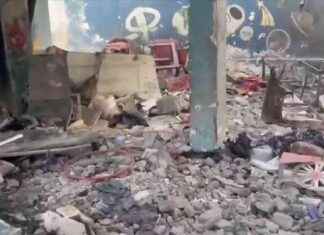HELENA, Mont. HELENA, Mont. — The combination of torrential rain and rapidly melting snowpack caused flooding that forced some areas of Yellowstone National Park to be evacuated. This cut off electricity and forced park officials to shut down all entrances indefinitely just as summer tourist season was ramping-up.
Although many homes and other structures were damaged, there was no immediate report of any injuries. Yellowstone officials stated that they are assessing the damage caused by the storms. The storms washed away bridges and caused mudslides. Small cities were left isolated and forced evacuations by helicopter and boat.
It is not clear how many park visitors have been forced or stranded, and how many have been rescued.
The park’s northern section and Yellowstone’s gateway towns in southern Montana suffered the most severe damage. National Park Service photos from northern Yellowstone showed a massive mudslide that washed out bridges, and caused roads to be cut by the churning floodwaters from the Gardner and Lamar Rivers.
The flooding closed the road to Gardiner in Montana. This town, which is home to approximately 900 people, was located near the confluence between the Yellowstone-Gardiner rivers. It’s just outside Yellowstone’s busy North Entrance. Floodwaters also made Cooke City impassible and evacuated residents of Livingston.
Get the NBC News app to get breaking news and political updates
Park County, which includes these cities, announced Monday evening via Facebook that flooding in several areas of the county made it unsafe to drink water. Officials urged those who were safe to stay there overnight while rescues and evacuations continued.
Monday’s announcement by the Montana National Guard stated that two helicopters were sent to Southern Montana by the Montana National Guard to assist with evacuations.
Cory Mottice is a meteorologist at the National Weather Service, Billings, Montana. He said that rain is not expected in the near future and that cooler temperatures will reduce the snowmelt over the next few days.
Mottice stated, “This flooding is like nothing we’ve ever seen in our lives before.”
Scientists believe climate change is responsible in increasing the frequency and intensity of extreme weather events like storms, droughts and floods. However, single weather events are often not directly related to climate change without extensive research.
According to the National Weather Service, Monday’s Yellowstone River crested at 13.88 feet at Corwin Springs, a record higher than the 1918 record of 11.5 feet.
Parker Manning was able to see the Yellowstone River floodwaters from his cabin in Gardiner.
Manning, a Terra Haute native, said that “we started seeing whole trees floating down the River, debris.” “I saw one crazy kayaker come down through, which was pretty insane.”
Manning watched Monday night as the rushing waters subcut the riverbank opposite, causing a house in Yellowstone to plummet into the Yellowstone River, where it remained mostly intact.
Red Lodge, Montana, is a town of 2,100 people. Floodwaters overflowed a street that was inundated by floodwaters. This popular point makes it a great jumping-off point to take scenic routes into Yellowstone’s high country. The Billings Gazette reported that Kristan Apodaca, twenty-five miles northeast in Joliet, wept as she stood in front of a collapsed bridge.
Her grandmother’s log cabin, which she lost in March, was flooded along with the park where her husband proposed.
“I am sixth-generation. She said, “This is our home.” “That bridge was literally what I drove yesterday. It was driven by my mom at 3:00 a.m., before it was washed away.
Yellowstone officials evacuated northern Yellowstone on Monday. Roads may be impassable for some time, said Cam Sholly, park superintendent.
However, the floods also affected the rest the park. Officials warned of more flooding and possible problems with the water supply and wastewater systems in developed areas.
The high season is when the rains are most intense. Yellowstone’s busiest month is June. This marks the beginning of an annual wave with over 3 million tourists that won’t stop until fall.
Yellowstone received 2.5 inches of rain on Saturday, Sunday, and Monday. According to the National Weather Service, Yellowstone’s Beartooth Mountains north received as much as 4 inches of rain.
Flooding on the Stillwater River left 68 people stranded at a campground in south-central Montana. Stillwater County Emergency Services and Stillwater Mine crews rescued people by raft from Woodbine Campground. Residents have been evacuated from some roads that are currently closed due to flooding.
The sheriff’s office stated in a statement that they will assess the damage to homes and structures once the waters recede.
While other parts of the U.S. were experiencing hot and dry weather, the flooding occurred. As a heat wave moves across the country, more than 100 million Americans were warned to stay inside.








